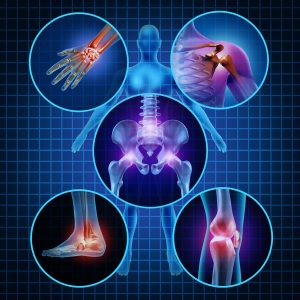
Infectious arthritis, also called septic arthritis, is a painful infection in a joint that can come from germs that travel through your bloodstream from another part of your body. Septic arthritis can also occur when a penetrating injury, such as an animal bite or trauma, delivers germs directly into the joint.
Infants and older adults are most likely to develop septic arthritis, and people with artificial joints are also at risk of septic arthritis. Knees are most commonly affected, but septic arthritis also can affect hips, shoulders, and other joints. The infection can quickly and severely damage the cartilage and bone within the joint, so prompt treatment is crucial.
Treatment involves draining the joint with a needle or during surgery. Antibiotics also are usually needed.
Symptoms
Septic arthritis typically causes extreme discomfort and difficulty using the affected joint. The joint could be swollen, red and warm, and you might have a fever.
Causes
Septic arthritis can be caused by bacterial, viral, or fungal infections. Bacterial infection with Staphylococcus aureus (Staph) is the most common cause, and Staph commonly lives on even healthy skin.
Septic arthritis can develop when an infection, such as a skin or urinary tract infection, spreads through your bloodstream to a joint. Less commonly, a puncture wound, drug injection, or surgery in or near a joint — including joint replacement surgery — can give the germs entry into the joint space.
Risk factors
Risk factors for septic arthritis include:
- Existing joint problems. Chronic diseases and conditions that affect your joints — such as osteoarthritis, gout, rheumatoid arthritis, or lupus — can increase your risk of septic arthritis, as can previous joint surgery and joint injury.
- Having an artificial joint. Bacteria can be introduced during joint replacement surgery, or an artificial joint may become infected if germs travel to the joint from a different area of the body through the bloodstream.
- Taking medications for rheumatoid arthritis. People with rheumatoid arthritis have a further increase in risk because of medications they take that can suppress the immune system, making infections more likely to occur. Diagnosing septic arthritis in people with rheumatoid arthritis is difficult because many of the signs and symptoms are similar.
- Skin fragility. Skin that breaks easily and heals poorly can give bacteria access to your body. Skin conditions such as psoriasis and eczema increase your risk of septic arthritis, as do infected skin wounds. People who regularly inject drugs also have a higher risk of infection at the injection site.
- Weak immune system. People with a weak immune system are at greater risk of septic arthritis. This includes people with diabetes, kidney and liver problems, and those taking drugs that suppress their immune systems.
- Joint trauma. Animal bites, puncture wounds, or cuts over a joint can put you at risk of septic arthritis.
Treatment
Doctors rely on joint drainage and antibiotic drugs to treat septic arthritis.
Joint drainage
Removing the infected joint fluid is crucial. Drainage methods include:
- Needle. Sometimes, your doctor can withdraw the infected fluid with a needle inserted into the joint space.
- Scope procedure. In arthroscopy (ahr-THROS-kuh-pee), a flexible tube with a video camera at its tip is placed in your joint through a small incision. Suction and drainage tubes are then inserted through small incisions around your joint.
- Open surgery. Some joints, such as the hip, are more difficult to drain with a needle or arthroscopy so an open surgical procedure might be necessary.
Antibiotics
To select the most effective medication, your doctor must identify the microbe causing your infection. Antibiotics are usually given through a vein in your arm at first, and later, you may be able to switch to oral antibiotics.
Typically, treatment lasts from two to six weeks. Antibiotics carry a risk of side effects, including nausea, vomiting, and diarrhea. Allergic reactions also can occur. Ask your doctor about what side effects to expect from your medication.
0 Comments